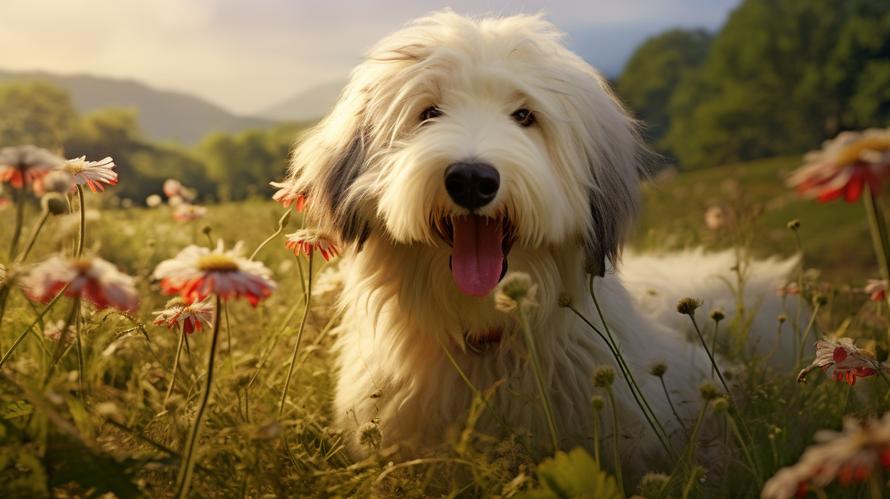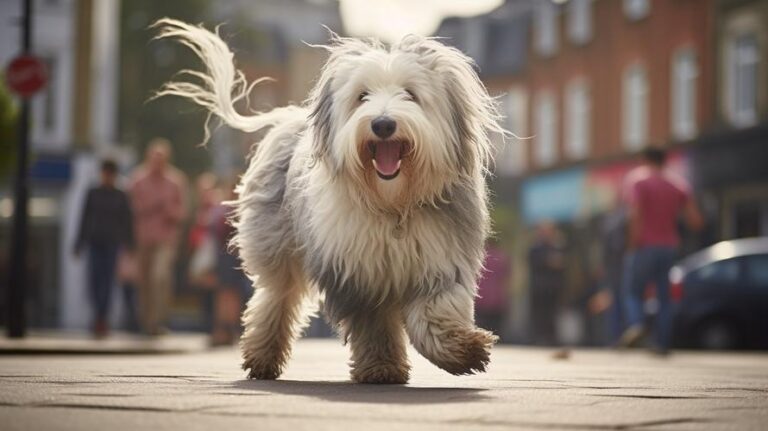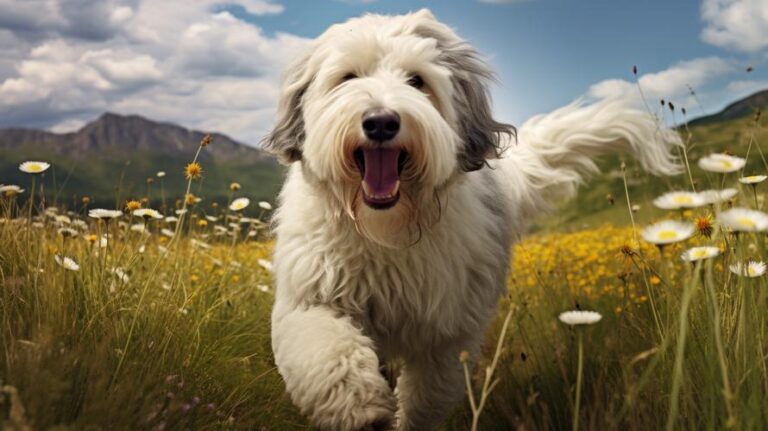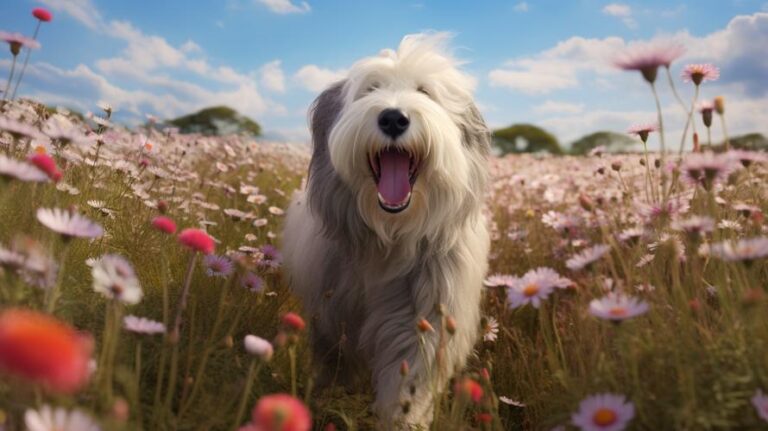Hollywood has quite a selection of well-known canine stars, yes, the Old English Sheepdog is among those that have stolen the limelight, and possibly your heart. This breed has graced the big screen in movies like Disney’s “The Shaggy Dog” and “The Little Mermaid.” With their shaggy, tumbled weedy coats, stout bodies, and warm blue or brown eyes are enough to melt even the most frigid heart. Yet, their adorable, clumsy, bear-like appearance can distract us from answering an important question – Does an Old English Sheepdog have special dietary requirements?
Old English Sheepdogs (OES) are classed as a large breed dog and not surprisingly they have a hearty appetite. But the question isn’t merely about quantity. Just like human beings require a balanced diet for optimal health, these huggable furballs require the right type of nutrients as well.
The answer to the question is, ‘Yes.’ An Old English Sheepdog does require special dog food to cope well with their unique dietary needs. It’s not due to any elitism or peculiar tastes; it’s a matter of maintaining good health and happiness for the dog.
This breed has practical roots. These intelligent, hardy creatures were initially bred as cattle herding and droving (guiding) animals here in rural England. In turn, those duties demanded plenty of energy and endurance. But even if your OES isn’t likely crossing the plains of the English countryside, they still have the same strong nutritional needs inherited from their ancestors.
But what, exactly, is special about Old English Sheepdog food?
Remember those old cartoons where a character would come across a giant steak and their eyes would literally turn into spinning BBQ grills? That pretty much sums up the central role of meat in a dog’s diet – this doubly applies to an OES. The major part of their diet need to include high-quality animal protein. Poultry, fish, beef, and lamb make excellent protein choices, helping to build strong muscles and power your dog’s daily activities.
But protein alone doesn’t make a dog’s power meal. Fats are the next big thing on the menu. Essential fatty acids fuel your OES’s energy and assist in maintaining that shiny, beautiful coat. Omega-3 and Omega-6 fatty acids are particularly crucial. But not all fats are equal. For instance, avocado is a rich source of healthy fats. But avocados can be toxic for your dog due to a natural compound called persin. So, where should the required fats come from? Chicken fat and fish oil are excellent sources, while some non-animal sources like flaxseed and canola oil can round out the fat portion of the diet.
That’s not all. Just like we humans need our greens and grains, a balanced diet for an Old English Sheepdog must comprise carbohydrates. Sweet potatoes, brown rice, oatmeal, and beet pulp are ideal choices to deliver enough energy and fiber, fostering digestion and keeping your dog feeling full longer.
Now, let’s turn straight to a meaty subject – the question of potential health concerns. As is true with any breed, an OES has its share of health issues, some of which can be influenced by diet. For example, Hip dysplasia, a common issue in many large breeds, can be mitigated with a diet rich in glucosamine and chondroitin—ingredients that contribute to joint health.
Also, Old English Sheepdogs are among the breeds most prone to a condition called “bloat”. It’s a possible life-threatening condition where the stomach can twist and fill with gas, blocking the normal passage of food. Feeding your OES smaller, more frequent meals and avoiding vigorous exercises immediately after meals can help minimize the risk.
Similarly, a condition known as Progressive Retinal Atrophy (PRA), which often leads to blindness, can be managed with antioxidants like beta-carotene and Vitamin A.
But hold your worries. Despite some of these health challenges, a properly nourished Old English Sheepdog can live a long, happy, and more importantly, a healthy life. Plus, the joy this cuddly companion brings to your life is a charm that no words can accurately capture.
The role of dog food intended for large breeds also cannot be undermined. Special dog food for large breed puppies, for example, has the right ratios of calcium and phosphorus to promote bone growth, without causing the puppy to grow too quickly – another reason for potential joint problems.
Choosing the right food for your OES might feel daunting initially. But, armed with knowledge about what your companion needs, and possibly a little trial and error, you’re up to the task!
Remember that while these tips are breed-specific, each dog is, after all, an individual. Allergic reactions, personal preferences, and even lifestyle choices (some folks choose to raise vegetarian or vegan dogs) can all influence what ends up in your pet’s food bowl!
When choosing food for your Old English Sheepdog, the best practice is to consult with a qualified vet or a pet nutritionist. Seek a dog food that has undergone feeding trials and meets standards set by organizations like The Association of American Feed Control Officials (AAFCO).
After all, with their trademark ambling gait, good-natured characters, and perennially shaggy appearances, Old English Sheepdogs are more than just pets—they’re part of the family. So just as you would ensure any member of your family has a nutrient-rich meal, remember the unique dietary needs of your OES.
Bon appétit, Fido!



